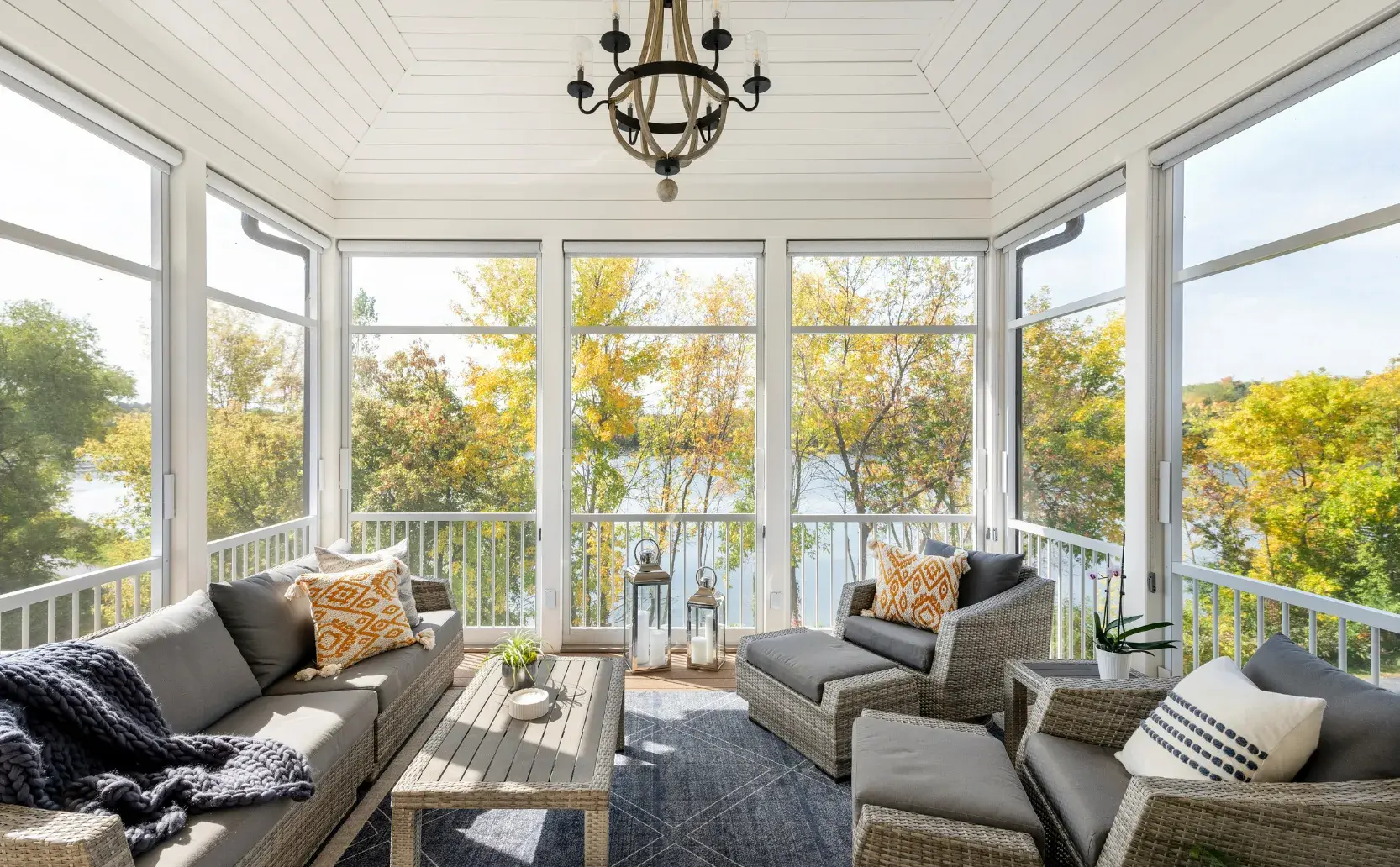When planning a room addition in San Jose, one crucial aspect that’s often overlooked is acoustic treatment. The right acoustic wall can transform your new space, whether you’re adding a home office, entertainment room, or bedroom. San Jose’s unique urban environment presents specific noise challenges that proper acoustic solutions can address, enhancing the comfort and functionality of your room addition project.
Acoustic walls aren’t just for recording studios or theaters anymore. Today’s homeowners recognize that sound management is essential for creating comfortable living spaces, especially in densely populated areas like San Jose. From blocking external noise pollution to preventing sound from traveling between rooms, acoustic walls serve multiple purposes in modern room additions.
This guide will walk you through everything you need to know about selecting the perfect acoustic wall solution for your San Jose room addition project. From understanding the science behind soundproofing to comparing different materials and installation techniques, you’ll gain the knowledge needed to make informed decisions that align with your specific needs and budget.
Understanding Acoustic Walls and Their Benefits in Room Additions
Acoustic walls are specialized wall systems designed to control sound transmission and reflection. Unlike standard walls, which often allow sound to pass through relatively easily, acoustic walls incorporate materials and construction techniques specifically engineered to manage sound. When incorporated into your room addition project, they can significantly enhance the comfort and usability of your new space.
The benefits of including acoustic walls in your San Jose room addition extend beyond just reducing noise. These specialized walls can:
- Enhance privacy by preventing conversations from being overheard in adjacent rooms
- Create ideal listening environments for home theaters or music rooms
- Reduce external noise pollution from San Jose’s busy streets and neighborhoods
- Improve concentration in home offices by minimizing distractions
- Increase property value by offering superior sound isolation compared to standard constructions
- Provide thermal insulation benefits, potentially reducing energy costs
- Create a more peaceful living environment overall
For San Jose homeowners, acoustic walls are particularly valuable due to the city’s dense urban development, proximity to major highways and airports, and the Mediterranean climate that encourages open windows and outdoor living. A well-designed room addition with proper acoustic treatment creates a sanctuary from the bustling Silicon Valley environment.
The effectiveness of acoustic walls is measured using Sound Transmission Class (STC) ratings. Standard interior walls typically have STC ratings between 33-35, while well-designed acoustic walls can achieve ratings of 50 or higher. Each 10-point increase in STC rating reduces sound transmission by approximately 50%, making a substantial difference in perceived noise levels.
The Science Behind Acoustic Wall Performance
To select the right acoustic wall solution for your room addition, it’s helpful to understand the basic principles of sound control. Sound management involves addressing two distinct issues: sound transmission through structures (impact and airborne noise) and sound reflection within spaces (reverberation and echo).
Acoustic walls combat these issues through four main mechanisms:
- Mass: Heavier materials resist sound vibration better than lighter ones. This is why traditional soundproofing often involves thick, dense materials.
- Absorption: Soft, porous materials capture sound energy and convert it to heat through friction. These materials are particularly effective at managing mid to high-frequency sounds.
- Decoupling: Creating separation between wall surfaces prevents direct transmission of vibrations. Techniques like staggered studs, resilient channels, or isolation clips break the path that sound vibrations would normally travel.
- Damping: Special materials that convert vibrational energy to heat help reduce sound transfer. Damping compounds placed between layers of other materials can significantly enhance overall performance.
For a San Jose room addition, the ideal acoustic wall system often incorporates all four of these principles. The specific combination depends on your particular needs, existing noise conditions, and the intended use of your new space.
Local factors unique to San Jose that might influence your acoustic wall selections include:
- Proximity to highways like 101, 280, or 87
- Flight paths from San Jose International Airport
- Neighborhood density and surrounding activities
- Local construction styles and materials
- Seasonal considerations and climate adaptation
Understanding these principles will help you evaluate the various acoustic wall options available for your room addition project and select solutions that deliver the performance you need.
Evaluating Your Acoustic Needs for a San Jose Room Addition
Before selecting specific acoustic wall solutions, it’s important to assess your particular needs. Different room additions require different levels of sound control depending on their purpose and location. Taking time to evaluate your acoustic requirements will ensure you invest in appropriate solutions rather than over or under-engineering your project.
Consider these factors when determining your acoustic needs:
Room Purpose: The intended use of your room addition significantly impacts acoustic requirements. Home theaters, music rooms, and recording spaces need comprehensive acoustic treatment focusing on both sound isolation and internal acoustics. Home offices benefit from sound isolation to maintain privacy during calls and improve concentration. Bedrooms typically prioritize blocking external noise for restful sleep.
External Noise Sources: San Jose’s varied neighborhoods experience different noise challenges. Properties near Lawrence Expressway or Highway 101 contend with consistent traffic noise. Homes in downtown San Jose or near Santana Row may experience commercial and pedestrian activity noise. Those near San Jose State University might deal with periodic increases in activity and noise levels.
Budget Considerations: Acoustic solutions range from basic improvements to professional-grade systems. Establishing a realistic budget helps narrow down options while ensuring you achieve meaningful sound control improvements in your room addition.
Existing Structure: The current construction of your home affects how acoustic walls will integrate with the room addition. Older San Jose homes might require different approaches than newer constructions due to differences in building materials and techniques.
Permit Requirements: San Jose has specific building codes that may influence acoustic wall installation in room additions. Familiarize yourself with local requirements, particularly for specific neighborhoods or historic districts.
Long-term Plans: Consider how your needs might evolve over time. If you’re adding a nursery that will later become a teenager’s bedroom, or a home office that might eventually become a rental unit, plan for acoustic flexibility.
For most San Jose room additions, a combination of strategies works best. This might include sound isolation from outside noise, sound absorption within the room to control reverberation, and targeted solutions for specific issues like mechanical noise from HVAC systems or plumbing.
Types of Acoustic Wall Solutions for Room Additions
When planning your San Jose room addition, you’ll encounter various acoustic wall solutions. Each type offers different benefits, aesthetic options, and price points. Understanding these options will help you select the most appropriate solution for your specific needs.
Double Drywall with Green Glue
This relatively simple approach involves adding an additional layer of drywall with a damping compound (typically Green Glue) between layers. It’s a popular choice for room additions because:
- It provides a significant improvement over standard walls
- Installation is straightforward and compatible with existing construction methods
- The finished appearance is identical to standard walls
- It’s relatively cost-effective compared to specialized systems
For a typical San Jose room addition, this method can increase STC ratings from the standard 35 to approximately 45-50, which represents a substantial improvement in sound isolation.
Resilient Channel Systems
Resilient channels are metal strips installed between wall studs and drywall that mechanically decouple the drywall from the frame. Benefits include:
- Effective reduction of sound transmission through structural elements
- Compatible with standard construction techniques
- Can be combined with insulation and mass-loaded vinyl for enhanced performance
- Moderately priced option that delivers good results
Resilient channel systems are particularly effective for room additions where impact noise or low-frequency transmission is a concern.
Mass Loaded Vinyl (MLV)
This dense, flexible material can be installed within wall assemblies to add mass without significant thickness. Advantages include:
- Exceptional performance-to-thickness ratio
- Can be installed in existing walls with minimal space loss
- Effectively blocks a wide frequency range of sounds
- Works well in combination with other acoustic treatments
MLV is often recommended for San Jose room additions where space is at a premium but acoustic performance cannot be compromised.
Acoustic Panels and Decorative Solutions
For room additions where aesthetics are particularly important, decorative acoustic panels offer dual benefits:
- Available in various colors, patterns, and textures to complement interior design
- Provide effective sound absorption to manage room acoustics
- Can be installed after construction as needed
- Range from subtle to statement pieces depending on preference
These solutions work particularly well in home theaters, music rooms, or offices within your room addition.
Specialized Acoustic Drywall
Products like QuietRock or SoundBreak offer enhanced acoustic performance in a format similar to standard drywall. Benefits include:
- Simplified installation compared to multi-layer systems
- Reduced thickness compared to alternative solutions with similar performance
- Familiar finishing process for contractors
- Consistent results when properly installed
This option often makes sense for room additions where space is limited but sound control remains a priority.
Each of these solutions can be appropriate for a San Jose room addition depending on your specific circumstances. Many successful projects incorporate multiple approaches, such as resilient channels and acoustic insulation, or double drywall with decorative panels, to address both sound transmission and room acoustics.
Installation Considerations for Acoustic Walls in Your Room Addition
Proper installation is crucial for acoustic wall performance in your San Jose room addition. Even the highest quality materials can fail to deliver expected results if installation doesn’t follow acoustic best practices. Understanding these considerations helps ensure your investment delivers the sound control you need.
Sealing and Gasketing
Sound travels through even the smallest openings, making proper sealing essential:
- Use acoustic sealant around all perimeters where walls meet floors, ceilings, and adjacent walls
- Install sound-rated gaskets around electrical outlets and switches
- Ensure doors and windows in your room addition have appropriate acoustic seals
- Address any penetrations for HVAC, plumbing, or other services with proper acoustic treatment
In San Jose’s variable climate, proper sealing also provides energy efficiency benefits while improving acoustic performance.
Staggered Construction
Breaking the direct path of sound transmission significantly improves acoustic performance:
- Consider staggered stud construction where appropriate
- Ensure layers of materials don’t share the same seams
- Create air gaps between layers where possible
- Use acoustic hangers for ceiling installations
These techniques prevent sound from finding a direct transmission path through your room addition’s walls.
Professional Expertise
While some acoustic treatments can be DIY projects, others benefit from professional installation:
- Complex systems like resilient channels require precise installation to perform properly
- Acoustic door assemblies need careful adjustment to maintain both sound seals and proper operation
- Specialized materials may have specific installation requirements to deliver rated performance
For San Jose room additions with significant acoustic requirements, working with contractors experienced in acoustic construction can ensure proper implementation of your chosen solutions.
Inspecting the Work
Quality control during installation helps prevent acoustic weak points:
- Check that all seams are properly treated with acoustic sealant
- Verify that resilient channels or isolation clips are correctly installed
- Ensure insulation completely fills cavity spaces without compression
- Confirm that mechanical systems don’t create acoustic bridges through otherwise well-designed walls
Taking these steps during the construction of your room addition can prevent costly remediation later.
Integration with Other Systems
Consider how acoustic walls interact with other elements of your room addition:
- Coordinate acoustic treatments with HVAC design to minimize noise from ducts and registers
- Plan electrical outlet locations to minimize penetrations in critical acoustic barriers
- Consider lighting options that don’t compromise ceiling acoustic treatments
- Address floor/ceiling assemblies in multi-story room additions
This holistic approach ensures all systems work together to create the desired acoustic environment in your San Jose room addition.
By paying attention to these installation details, you’ll maximize the performance of whatever acoustic wall solutions you select for your project. Remember that acoustic performance is only as strong as the weakest link in the system, making proper installation as important as material selection.
Read more:
Why Acoustic Walls Are Essential for Noise Control in San Jose, CA Room Additions


